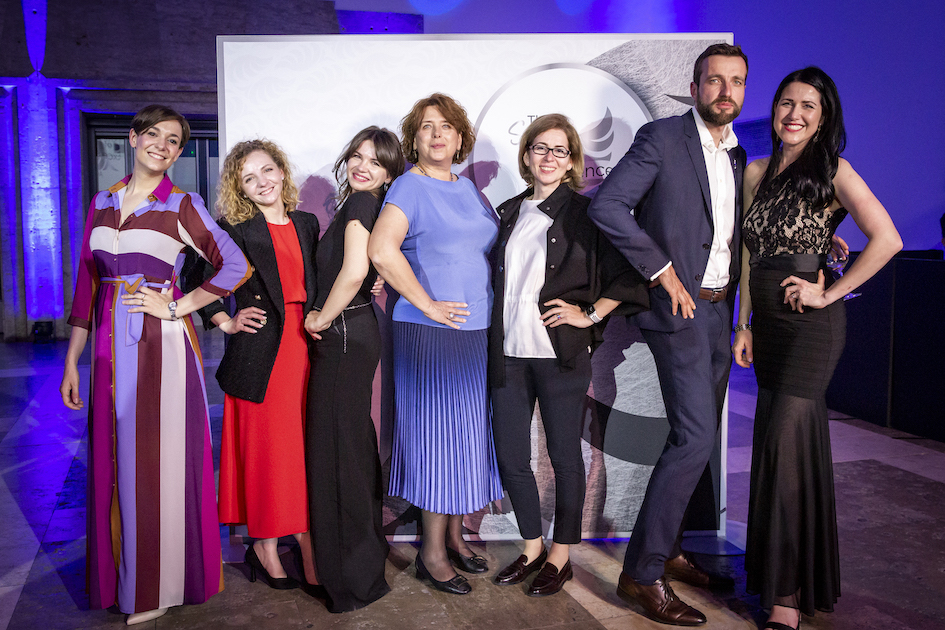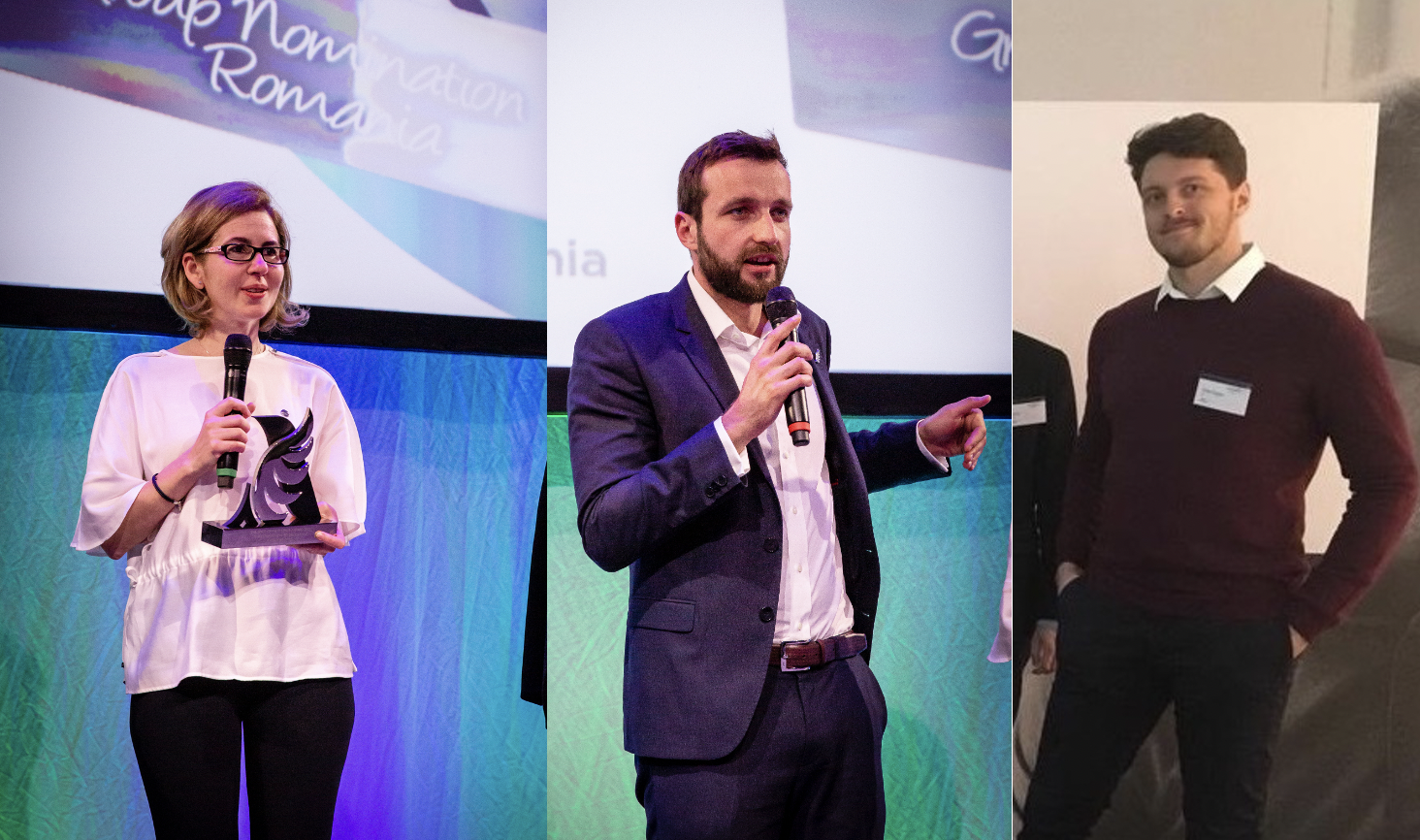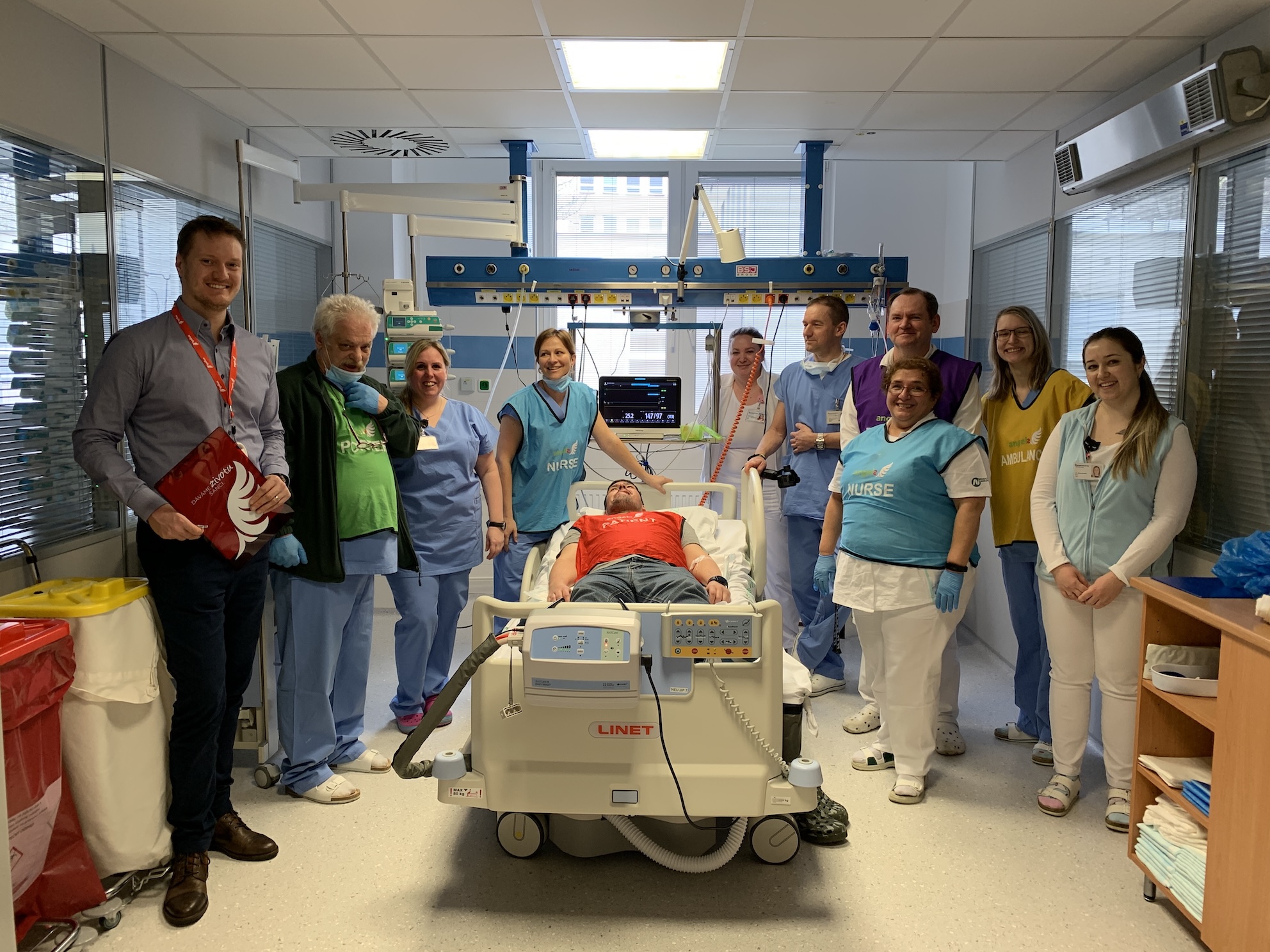
Quelle est la motivation et la mission ?
Dr Elena Terecoas
Nous nous sommes impliqués dans ce projet avec la ferme conviction que le traitement des patients victimes d’accident vasculaire cérébral en Roumanie peut être amélioré de manière significative, tout comme cela s’est produit dans d’autres pays européens. Au départ, nous voulions avoir autant d’hôpitaux que possible dans le pays qui pourraient offrir un traitement par thrombolyse intraveineuse aux patients victimes d’un accident vasculaire cérébral aigu. Plus tard, nous avons souhaité que ces hôpitaux traitent le plus de patients possible. Maintenant, nous visons de meilleures normes de qualité et l’amélioration des soins pré-hospitaliers pour accident vasculaire cérébral .
Dr Vlad Tiu
Pour être clair, l'équipe de rêves ne signifie pas que nous sommes un peu meilleurs que les autres, mais plutôt que parfois il vous arrive juste de rencontrer des gens très spéciaux en cours de route et de cliquer. J’aimerais que tout le monde puisse ressentir ce profond sentiment de bonheur et d’augmentation de la productivité que vous obtenez en faisant partie d’une équipe qui se sent comme un rêve. J’ai toujours pensé que nous sommes tous responsables de rendre l’endroit qui nous entoure un peu meilleur. Nous faisons juste le meilleur travail possible.
Dr Rkzvan Radu
L’objectif est simple, bien que difficile à atteindre – pour construire un réseau intégré et efficace sur l’accident vasculaire cérébral. La mission est plus ambitieuse : atteindre les taux de traitement définis dans le plan directeur de l’accident vasculaire cérébral, qui dans un grand pays peuplé avec trop peu de médecins est encore plus difficile. Nous sommes guidés par notre certitude que nous pouvons mieux faire, malgré les problèmes de notre système soins de santé. Nous pensons que les professionnels de soins de santé doivent façonner le système de soins de santé, et non l’inverse.
Si vous pouviez changer une chose...
Dr Elena Terecoas
J’aimerais voir dans chaque hôpital une équipe de neurologues impliqués dans le traitement des patients accident vasculaire cérébral. Cela entraînerait un changement pour
mieux au niveau local, à la fois en termes d’activité en neurologie, en radiologie et aux services d’urgence, et en éduquant la population sur la reconnaissance rapide des symptômes d’accident vasculaire cérébral.
Dr Vlad Tiu
J’ai du mal à choisir entre de meilleurs soins post-aigus ou l’amélioration de l’accès à la thrombectomie mécanique en phase hyperaiguë. Nous avons certainement besoin de beaucoup plus de ces deux éléments. Mais le besoin le plus urgent, avec l’impact le plus important, serait d’augmenter significativement l’accès aux procédures neuro-interventionnelles.
Dr Rkzvan Radu
J’aimerais voir un système de transfert de pointe pour les cas d’occlusion des gros vaisseaux (OVG) entre les centres de traitement existants et futurs et les centres complets. Dans l’idéal, il combinerait l’orientation au niveau préhospitalier avec un logiciel qui peut définir en toute confiance une OVG sur une TDM native et activer immédiatement le protocole de transfert.
Qu’est-ce qui a eu le plus d’impact ?
Dr Elena Terecoas
Trois facteurs ont contribué de manière décisive à l’amélioration du traitement des patients victimes d’accident vasculaire cérébral en Roumanie : mise en œuvre d’un protocole national de traitement de l’accident vasculaire cérébral, d’ateliers régionaux et du développement du Réseau national de traitement des patients victimes d’accident vasculaire cérébral qui implique non seulement des infrastructures, mais également une communauté de médecins qui collaborent avec confiance, facilité et efficacité.
Dr Vlad Tiu
Ateliers dédiés sur site. Chacun d’entre nous fait face à différents obstacles à l’amélioration des soins neuro-vasculaires, vous devez donc être là et voir comment les choses se passent. L’intégration de simulations dans ces ateliers tend également à produire les meilleurs résultats les plus rapides.
Dr Rkzvan Radu
Connaître le personnel d’un hôpital vous permet de les inspirer et de leur donner l’impression qu’ils ne sont pas seuls, mais plutôt de faire partie d’une équipe nationale qui travaille ensemble pour atteindre les mêmes objectifs.

Qu’est-ce qui se distingue ?
Dr Elena Terecoas
En 2017, j’ai pris la carte de la Roumanie et nous avons coloré les régions où les patients victimes d’accident vasculaire cérébral aigu pouvaient être traités par thrombolyse intraveineuse en orange et les régions où ils ne pouvaient pas être traités en gris. Le résultat a été une carte sur fond gris sur laquelle il y a eu des taches oranges. En 2019, j’ai créé une nouvelle carte qui avait un fond orange et seulement quelques points gris. C’était l’un des moments les plus heureux de ma carrière médicale.
Dr Vlad Tiu
Les Angels Awards ont fait beaucoup pour changer notre état d’esprit. Surveillance des soins de l’AVC, analyse des données du registre, auto-déclaration (honnêteté), définition des objectifs. L'année prochaine, l'échec et le retour sont plus déterminés, mieux préparés. Cela a normalisé les commentaires et nous a montré où nous étions dans le monde. Les hôpitaux en Roumanie remportent désormais régulièrement des prix diamant, platine et or. C’est quelque chose que j’aime beaucoup.
Dr Rkzvan Radu
Pour moi, c’était l’un des premiers ateliers Angels, en 2017. Il y avait beaucoup d’excitation et les médecins ont ensuite commencé à thrombolyser leurs premiers patients dans tout le pays. Aussi, une personne très spéciale de l'équipe Angels m'a dit "ne pas abandonner la Roumanie". Donc, je suis là. Espérons qu'il a raison !
Qu’est-ce qui vous accompagne ?
Dr Elena Terecoas
Mes événements préférés ont été les premiers ateliers régionaux à Braaov et à Sibiu. Cependant, nous ne pouvons pas parler de ces événements, qui ont eu lieu lorsque le taux de thrombolyse en Roumanie était de 1 %, sans parler de Ligia Bülenean, première consultant Angels en Roumanie. Elle a fait preuve d’une détermination fantastique et a fait un énorme effort pour mettre le bon thérapie à la disposition des patients victimes d’accident vasculaire cérébral en Roumanie. Ligia Bülïnean restera toujours la cinquième membre de l’équipe Dream.
Dr Vlad Tiu
Il s’agissait d’un matin d’hiver brumeux, et R’zvan et moi avons été envoyés à Constan à l’occasion d’un atelier de TIV et d’une simulation sur site. Nous étions tous les deux résidents à l'époque et je me souviens de l'aspect inquiétant et déçu alors que nous sommes entrés dans la chambre pleine de médecins en attente des "experts". Nous les avons en quelque sorte amenés à jouer et au moment où nous sommes partis, j’ai senti que quelque chose avait changé. Deux semaines plus tard, nous avons entendu dire que Constana venait de réaliser sa première thrombolyse. Ils le font depuis.
Dr Rkzvan Radu
Je faisais une simulation avec Vlad dans Constanka. Vlad jouait un membre de sa famille comme un acteur réel, créant de nombreux problèmes évidents pour les médecins impliqués. À ce moment-là, la thrombolyse n’a pas été réalisée dans le groupe Constana. Lorsqu'ils ont commencé avec succès le tPA, vous aviez 30 personnes qui vous regardaient en disant et en réfléchissant, "C'est ça ? C'est si facile ?. Constana a continué à réaliser un taux de tPA de 7 % au cours de sa première année et je trouve cela incroyable. Merci d’avoir donné cette opportunité à Angels.



